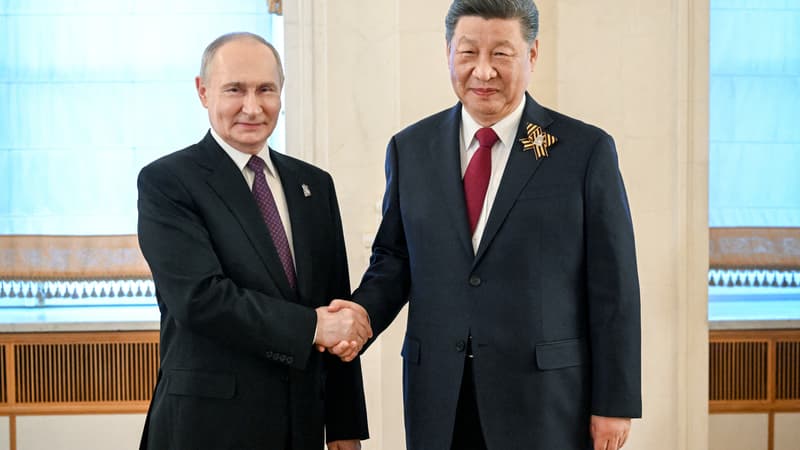Russia has been invading Ukraine for three and a half years, three years in which European countries responded economically to the blows that Moscow in kyiv used. In return, Russia has been inflicted by European countries a series of economic and political sanctions.
Since 2022, 90% of European imports of Russian oil have been covered by prohibitions. For other goods and services, most economic sectors see their access to the rejected European market. A policy that is not exempt from repercussions on the Russian economy: according to the European Union, it is a deficit of 91.2 billion euros for Moscow.
We must add to these other two points: the freezing of the assets of the Central Bank of Russia decided by Brussels and that constitutes 210 billion euros, as well as the exclusion of Russian banks from the Swift system, which penalizes them considerably in case of international exchanges.
The sanctions work on two legs, which applies to European currencies also applies to the goods: the invasion of Ukraine had the consequence of reducing the Russian Federation of access to manufactured goods and industrial components that are essential in fields such as maritime navigation, aerospace, defense or energy. To overcome this fault, Moscow turned east, and more particularly to China.
Russia is now using Asia
Between 2018 and 2024, trade between Russia and China increased from $ 108 billion to $ 244 billion, an amount that increased 126% during the period. To support this volume of exchange, Russia can count on its railway network, which constitutes the backbone of the transport of goods, but which is still largely unequal: apart from the large cities connected by the trans axis -fiber, the Asian parts of the Federation are the ones that have the least trains lines.
Worse, some regions are even devoid of it. Your common point? All are in the Far East. A thorn in the foot of Chinese-ruso trade, which Moscow intends to adjust by building 2,000 kilometers of railway lines to connect Urumqi in the Xinjiang in Sabetta, a port city of the Russian Arctic Circle. A project that is added to other projects in the region.
By rails, by roads and rivers
To rationalize its internal traffic, increase their exchanges with China and open new commercial roads, Russia also depends on river transport. Last May, Russian Prime Minister Mikhail Michoustine recalled his country’s intentions to invest more than $ 6 billion in the construction of 1,600 commercial ships by 2036.
The Russian Federation is the largest country in the world and can benefit from a large river network. The Tsar country is already illustrated by its river routes with the Five Seas system, a logistics network that Volga uses to transport millions of passengers and tons of load throughout the European Russia. This axis goes from the circle of the circle to the Caucasus. Connect the Baltic Sea, the White Sea, the Caspian Sea, the Azov Sea and the Black Sea.
By resorting to Asia, Moscow seeks to use other rivers to apply the same strategies. Now he leans towards Ob or Itych, which cross Novosibirsk and WHO. These two cities, which are already in the transssiberian design, intend to combine the railway and river load to become multimodal platforms: an investment of $ 340 million was made for logistics stores, which must be opened in WHO in 2028.
For Novalossibirsk, the Government’s initiative of the Industrial Logistics Park brings together more than $ 750 million to develop the transport sector. Other cities are affected by similar projects: Andrei Tarasenko, head of the Federal Agency Russia of Maritime Transport, said that Perm, Samara and Dmitrov will have multimodal logistics centers by 2027.
Arctic, land for polar silk roads
Russia, making two blows with a stone. In addition to avoiding western sanctions, it extends its influence to the maritime spaces that surround it: these rivers lead to Arctic areas that Moscow wishes to develop, because global warming opens new opportunities.
The fusion of ice would open new shorter and less risky trade routes. The thaw of these territories could also give access to unleashed resources: now around 160 billion oil barrels would be accessible.
Source: BFM TV


